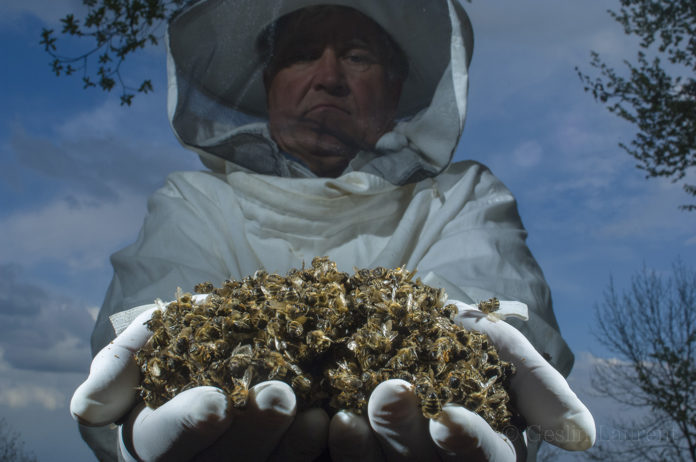
Environmental activists have long suspected that harmful neonicotinoid pesticides are behind the decimation of entire colonies of honey bees. Now, the Environmental Protection Agency (EPA) agrees.
In an announcement on Wednesday, the EPA has stated that a preliminary risk assessment of the neonicotinoid pesticide imidacloprid (one of the four types of neonicotinoids) shows that it poses a threat to some pollinators- especially honeybees.
The addictive, nicotine-like pesticides of the neonicotinoid group attacks the central nervous system of insects.
The EPA is still reviewing the harmful effects of neonicotinoids.
The EPA found that imidacloprid “potentially poses risk to hives when the pesticide comes in contact with certain crops that attract pollinators.”
A concentration of as little as 25 parts per billion in the nectar of flowering plants can have a negative effect on beehive populations.
Flowering crops like cotton or citrus are of particular concern, as crops like corn and vegetables do not produce nectar that attract bees (if at all).
Though the EU has imposed a two-year moratorium on three neonicotinoids last year ( despite the furious lobbying of very rich corporate interests like Bayer), neonicotinoids continue to be sold in the US – though the EPA did halt the outdoor usage of the pesticide last year, until it could complete its risk assessment.
The EPA had also proposed that the use of pesticides that harm bees be banned when crops are in bloom, though it is not contemplating a complete sales ban.
“Delivering on the president’s National Pollinator Strategy means EPA is committed not only to protecting bees and reversing bee loss, but for the first time assessing the health of the colony for the neonicotinoid pesticides,” said the assistant administrator for the EPA’s Office of Chemical Safety and Pollution Prevention, Jim Jones.
Some environmentalists believe that the findings understate the harmful effects to honey bees, calling for a complete suspension of sale and use of imidacloprid and other neonicotinoids.
“They’re not taking into account the realistic exposures in the field, they’re not looking at the impact of these pesticides on bees or wild pollinators over time,” said Lisa Archer, food and technology program director at Friends of the Earth.
The company behind imidacloprid, Bayer CropScience, has of course been critical of the EPA’s assessment for the opposite reason:
“At first glance it appears to overestimate the potential for harmful exposures in certain crops, such as citrus and cotton, while ignoring the important benefits these products provide and management practices to protect bees.”
They did not explain why they believed that the EPA’s findings “overestimate” the “harmful exposures” to bees, nor detail what “management practices” could be used to prevent their chemical product from killing entire colonies of honeybees. Bayer Cropscience has long blamed mite infestations and other factors for colony collapse disorder.
Bayer is “reviewing” the EPA’s findings.
The EPA intends to finalize its risk assessment (which was produced in collaboration with Californian state regulators and their Canadian counterparts) for imidacloprid after a 60-day public comment period.
The preliminary risk assessment of the three remaining neonicotinoid pesticides will be released in December of this year.
Sources: Truth Out, Bloomberg Business, Yahoo News
This Article (Environmental Protection Agency: Neonicotinoid A Threat To Honeybees) is free and open source. You have permission to republish this article under a Creative Commons license with attribution to the author(CoNN) and AnonHQ.com.




